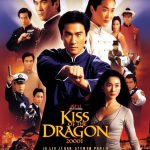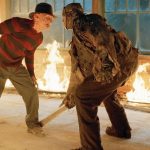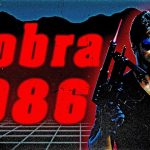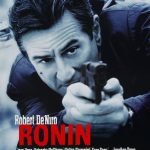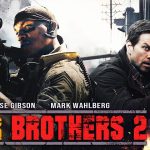Split Second (1992)

“Split Second,” released in 1992, is a distinctive blend of science fiction, horror, and action that has gained a dedicated cult following over the years. Directed by Tony Maylam and Ian Sharp, and penned by Gary Scott Thompson, the film presents a gripping narrative that combines dystopian elements, crime drama, and supernatural horror. With its unique premise and engaging characters, “Split Second” stands out as an intriguing entry in the genre, appealing to fans of both horror and sci-fi.
Set in a bleak, flooded future version of London, “Split Second” introduces us to Detective Harley Stone, played by the charismatic Rutger Hauer. Stone is a tough, brooding cop haunted by the trauma of a case gone wrong, where he lost his partner to a brutal killer. The film’s dystopian backdrop effectively mirrors Stone’s inner turmoil, showcasing a world where crime and chaos reign supreme. The flooded streets and dark, oppressive atmosphere create a sense of impending doom, immersing the audience in this grim reality.
The narrative kicks off when a series of gruesome murders plague the city, with each victim left in a horrific state. As the body count rises, it becomes apparent that the killer is not just a mere human but a supernatural creature with a penchant for bloodshed. This twist transforms the film from a conventional cop thriller into a supernatural horror, thrusting Stone into a race against time to uncover the truth and stop the killings.
Rutger Hauer’s performance as Harley Stone is one of the film’s standout features. Hauer infuses the character with a mix of vulnerability and grit, portraying a man grappling with his own demons while simultaneously facing an unseen threat. His brooding demeanor and physicality make Stone both relatable and formidable, driving the emotional core of the film. Stone’s quest for redemption and justice serves as a compelling backbone for the narrative.
Compounding Stone’s struggle is his new partner, Detective Michelle McLaine, portrayed by Kim Cattrall. Their dynamic introduces an element of tension and camaraderie that enriches the storyline. While Stone is consumed by his past, McLaine provides a fresh perspective, challenging him to confront his fears and work as part of a team. Their evolving relationship adds depth to the story, as they navigate the complexities of trust and partnership in the face of danger.

The film’s antagonist, the mysterious and monstrous killer, is a pivotal aspect of what makes “Split Second” engaging. The creature’s design and its unsettling movements evoke both fascination and terror, embodying the chaos and violence that permeate the film’s world. The creature’s motivations remain largely ambiguous for much of the narrative, enhancing the suspense as Stone and McLaine attempt to piece together the puzzle behind the murders. This ambiguity adds to the dread that fills the film, as viewers are left wondering just how far the horror will escalate.
The direction by Tony Maylam and Ian Sharp effectively captures the film’s gritty tone and heightens its suspenseful atmosphere. The cinematography by Peter Newbrook employs dark shadows and stark contrasts, enhancing the themes of isolation and despair that run throughout the film. The use of flooding as both a literal and metaphorical element adds layers to the story, symbolizing the drowning of hope and the overwhelming challenges the characters face.

“Split Second” also excels in its pacing, balancing moments of intense action with quieter, suspenseful scenes. The film features thrilling chase sequences and visceral confrontations that keep viewers on the edge of their seats. The action is complemented by practical effects that enhance the horror elements, making the film visually engaging. This combination of thrilling action and eerie horror creates a unique experience that captivates audiences from start to finish.
The score, composed by John Scott, further amplifies the film’s atmosphere, providing a haunting backdrop that intensifies the tension. The music shifts seamlessly between moments of adrenaline-pumping action and eerie, suspenseful tones, guiding viewers through the emotional landscape of the film.

While “Split Second” may not have received overwhelming critical acclaim upon its release, it has found a second life in the years since. Its blend of genres, engaging characters, and unique premise has earned it a loyal fan base. The film’s exploration of themes such as trauma, redemption, and the struggle between good and evil resonates with viewers, elevating it beyond a typical horror flick.

In conclusion, “Split Second” is a captivating film that artfully combines science fiction, horror, and action. With its gripping narrative, strong performances—particularly from Rutger Hauer—and a haunting atmosphere, the film immerses viewers in its dark, dystopian world. The blend of supernatural elements with traditional crime drama creates a compelling story that keeps audiences guessing. As a cult classic, “Split Second” continues to capture the imaginations of fans, standing as a testament to the creativity and innovation that can emerge from the genre. Its lasting appeal lies in its ability to provoke thought and evoke fear, making it a noteworthy addition to the canon of sci-fi horror films.

